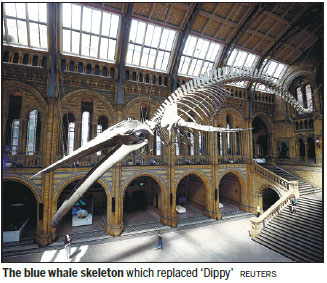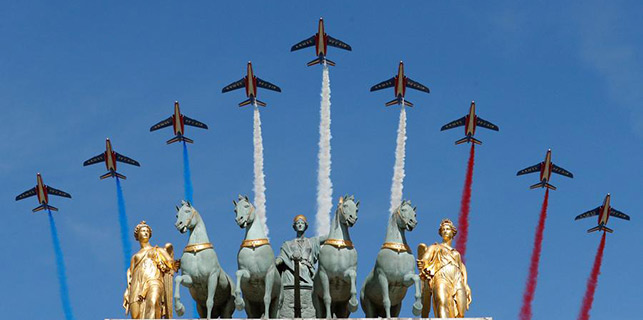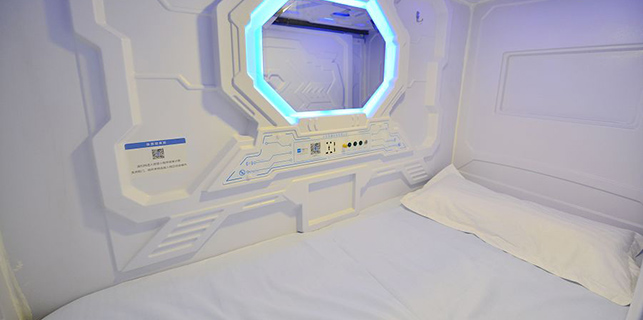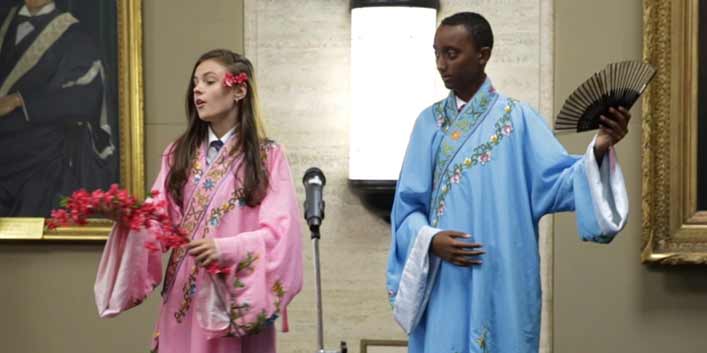Museum's dinosaur dismantling proves a real bone of contention
LONDON - "Hope" the blue whale took over as the centerpiece of the revamped atrium of London's Natural History Museum on Thursday despite a spirited campaign to keep its much-loved predecessor, "Dippy" the dinosaur.
The towering replica diplodocus skeleton had been in the museum for more than 100 years and news of its impending demise in 2015 sparked an outcry from dinosaur fans.
Some 14,000 people signed a petition on Twitter to stop the move.
But the museum said the skeleton of the blue whale, the largest animal to have lived on Earth and which has been hunted to near extinction, would better raise awareness of mankind's impact on nature.
The 25.2-meter real skeleton suspended from the ceiling is proof that "by using science and evidence, we can make good choices about the future, about sustainability," said museum director Michael Dixon.
Richard Sabin, the museum's leading whale expert, said exhibiting Hope in the atrium also showed that the Natural History Museum was "a museum of the future, a relevant museum that can be used to have debates, to answer those big questions in society".
Center stage
The whale was previously in the mammals section but was not fully in view and will now take center stage in the diving lunge feeding position in Hintze Hall, a cathedral-like space built in the late 19th century.
Fans of "Dippy" need not despair as the replica dinosaur will be preserved for posterity in a bronze cast to be placed outside the museum.
There were estimated to be around 250,000 blue whales in the world's oceans in the 1800s but commercial hunting brought the species to the brink of extinction in the 1960s with just 400 specimens left.
Legal protection from hunting has since seen their levels rise up to around 20,000 now.
The skeleton on display is of a whale that became stranded in Wexford Harbour in Ireland in 1891, 10 years after the opening of the Natural History Museum.
Afp - Reuters

(China Daily 07/15/2017 page9)






















